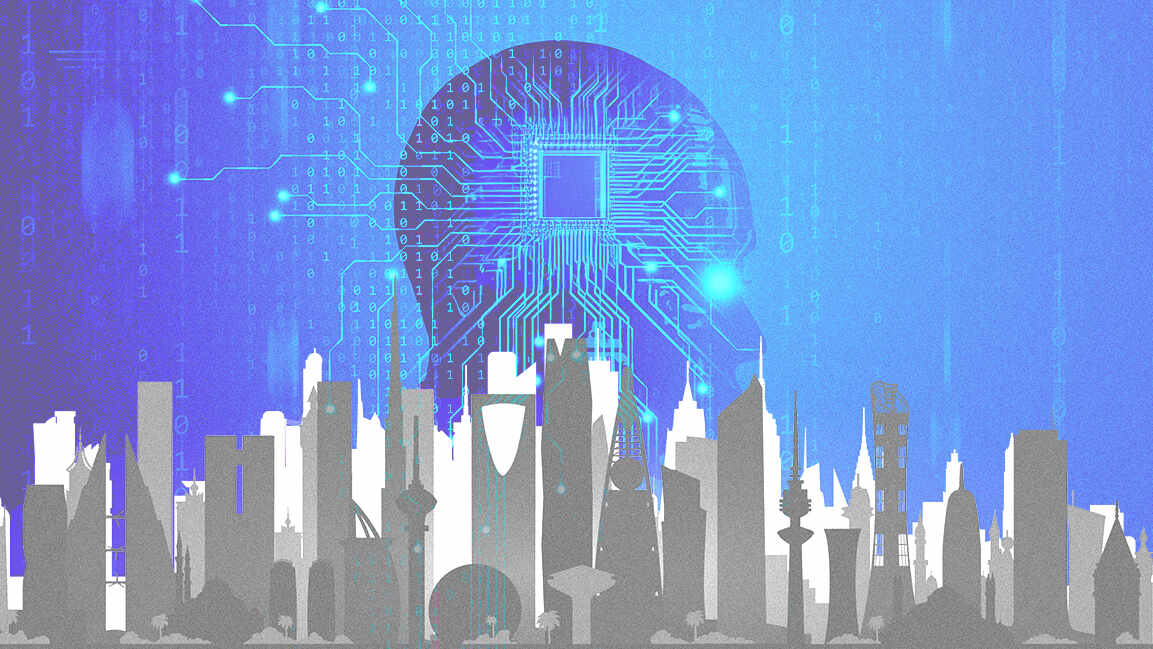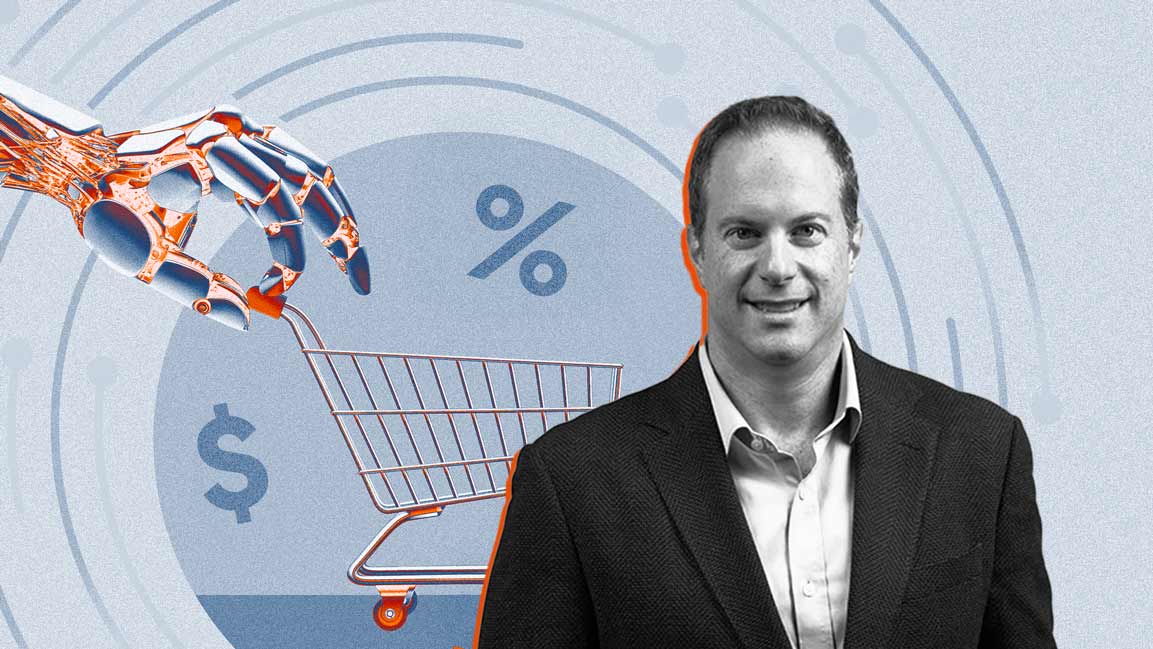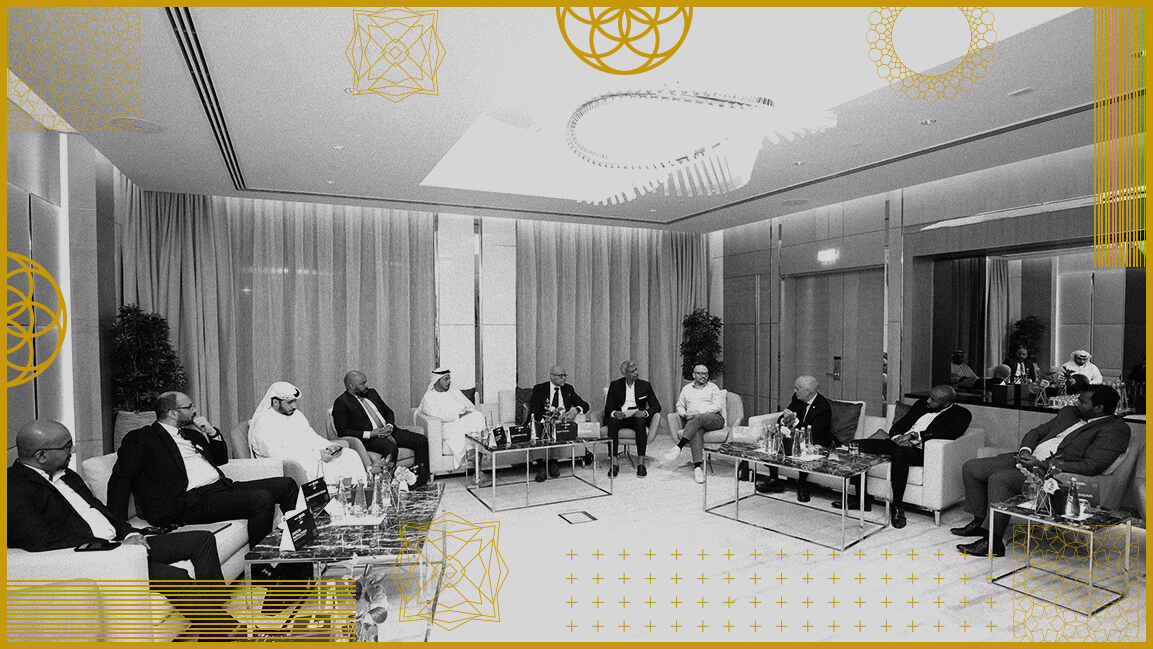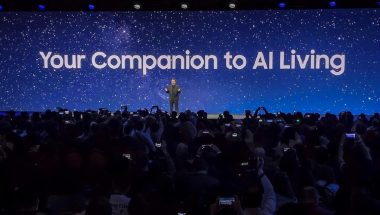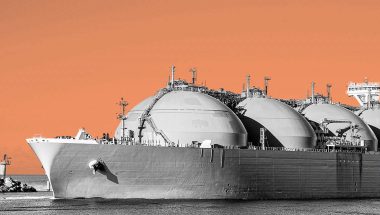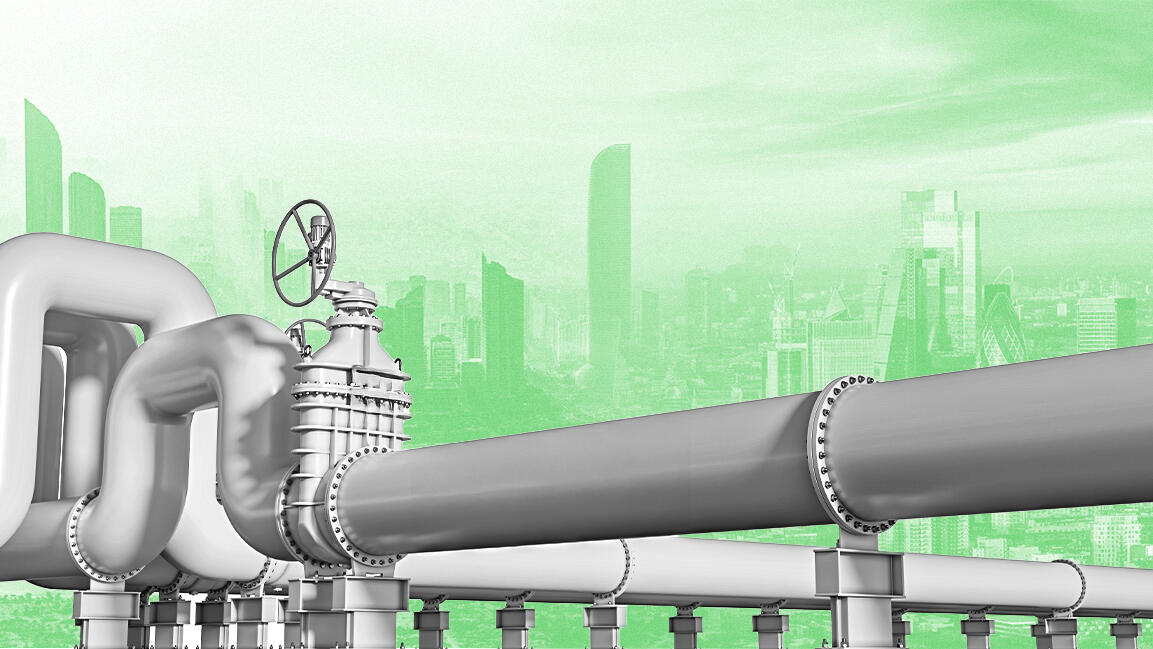This is how the infrastructure industry is leveraging AI and digital twins
An insider’s look at how new technologies, like AI and digital twins, will ensure a sustainable future for urban development

Imagine a city designed not just to endure but to think. Digital twin technology is the architect’s dream, transforming blueprints into dynamic realities. Sustainability? It’s non-negotiable in a world facing climate change. The real winners? Engineers, designers, and policymakers who are embracing the future now.
At the Year in Infrastructure (YII) event hosted by Bentley Systems in Vancouver, global industry leaders gathered to showcase excellence in infrastructure delivery and exchange visionary ideas for the future. Key discussions revolved around trends such as digital twins, sustainable development, and asset performance.
In an exclusive interview with Fast Company Middle East, Nicholas Cumins, CEO of Bentley Systems, shares how the company is leveraging AI and digital twins to enhance infrastructure management, improve efficiency, and tackle barriers to data integration while encouraging a data-driven approach for better decision-making in infrastructure projects.
BALANCING INFRASTRUCTURE, DATA, AND AI
“There is so much data generated in infrastructure, especially during the design phase—consider all the models and iterations created, of which only one will ultimately be selected from thousands,” Cumins explains.
The problem, according to Cumins, is that many stakeholders involved in design, construction, and operations often lack the ability to leverage their data to make informed decisions, a significant issue that needs addressing.
Cumins emphasizes that the next revolution in infrastructure lies in AI. While AI has been utilized in infrastructure for many years—primarily during the operations phase to assess the operating conditions of assets—it is poised to play a larger role moving forward. AI can identify potential risks, such as vegetation growth near infrastructure assets that could become dangerous, like plants encroaching on transmission lines.
Additionally, AI is used to detect issues such as corrosion or cracks in infrastructure, enabling the identification of problems and triggering remediation efforts at a scale that manual surveying could never match. “This is where AI has been applied in infrastructure, and it’s an area where our software has made a significant impact,” Cumins says, adding that Bentley Systems has been investing in AI for years.
He believes AI has even greater potential earlier in the infrastructure lifecycle, particularly during the design phase. “AI can help automate mundane tasks that don’t make the best use of engineers’ time. In many countries, there simply aren’t enough engineers to meet the growing demand,” he adds.
For Cumins, enabling engineers to focus on higher-value activities is paramount, and AI can be instrumental in automating repetitive tasks. “For instance, AI can handle documentation and annotation of drawings, freeing engineers from these routine duties and allowing them to concentrate on more critical aspects of their work.”
AI can also act as a co-pilot, offering suggestions for design alterations or improvements to enhance efficiency. For instance, it can optimize designs from a carbon footprint perspective, focusing on reducing embodied carbon. Early in the design process, AI can highlight how choosing a specific material or approach could significantly lower the carbon footprint.
At the YII event, Bentley Systems launched OpenSight+, an AI-powered design application that enables users to interact with an AI agent for project requirements and compliance checks. The AI co-pilot also automates the generation of drawings and annotations, streamlining the design process and reducing manual effort.
Cumins adds, “One of our clients, Pennoni, described this capability as a game changer. Depending on their role in the infrastructure life cycle, engineers can spend up to 20 to 50% of their time producing and annotating drawings—an inefficient use of their expertise. Automating these tasks significantly transforms their workflow, freeing them to focus on higher-value activities.”
Cumins explained that such AI-driven productivity improvements can accelerate as more data is made available and leveraged for insights. However, that availability requires data, which is often siloed within specific systems and teams, to flow more freely between infrastructure organizations. Cumins calls this approach, “open data ecosystems.”
“An open data ecosystem means that, first of all, the data needs to be always accessible. Second, you need to understand what that data means by mapping it to a schema. Third, you can start combining data from different sources to generate unique insights.”
An example that resonates is data from remote sensors installed on a bridge. These sensors can detect ground movement near the bridge. “You can have data about the bridge’s structure and information about the surrounding ground conditions. These are all very different types of data,” Cumins says. “But if you can detect movement, understand the bridge’s structure, and comprehend the ground conditions around it, you might conclude, ‘ if there’s going to be a significant earthquake event, the structure of that bridge is at risk.'”
“You can generate better insights by not only understanding the data but also by combining different sources,” he adds, emphasizing that this approach leads to unique insights. He says the vision moving forward is to create an open data ecosystem, ensuring data is accessible from anywhere, enabling users to understand that data, and allowing for its integration across various dimensions to generate meaningful insights.
SCALING AI DIGITAL TWINS
The challenges in scaling up the adoption of AI-powered digital twins across the infrastructure sector are multi-faceted.
First, engineering firms often struggle to obtain clear requirements from owner-operators. While these firms manage design and sometimes construction, they rely on owner-operators to request a digital twin as part of the final infrastructure asset. However, this willingness to adopt digital twins is still lagging in some regions and sectors.
Second, many engineering firms need more support due to the high demand for infrastructure. Cumins emphasizes, “This resource constraint makes it more difficult for firms to invest in and effectively implement AI-powered digital twins.” The increasing backlog of projects leaves little time for firms to adopt new technologies and change their workflows.
The third and more fundamental challenge is access to historical data, which is crucial for training AI models. “For instance,” Cumins explains, “we train our AI agents using Bentley’s software, which teaches the rules of various engineering disciplines, such as structural and geotechnical engineering. Engineering firms can then fine-tune these AI agents using their historical data and project conditions.”
However, a critical prerequisite for firms to fully leverage AI-powered digital twins is access to their historical data. Cumins notes, “Unfortunately, much of that data is often trapped in outdated file formats or systems that are no longer accessible, which is a challenge that must be resolved.”
To address these challenges, Bentley Systems is taking a multi-pronged approach by actively engaging with owner-operators to highlight the importance of digital twins, encouraging them to gradually empower engineering firms to deliver digital twins alongside infrastructure assets, and supporting engineering firms by clarifying that they don’t need to wait for owner-operators to adopt digital twins.
“Digital twin technology can save substantial time and effort in tasks such as design review, which will more than justify the shift from simply executing their existing backlogs.”
Additionally, Bentley Systems is addressing the issue more fundamentally by ensuring that all data generated through its tools remains accessible to users. “This accessibility enables firms to ingest and map the data to a schema, making it easier to understand and reuse, especially when fine-tuning AI agents they use from us.”
UNLOCKING TRAPPED INFRASTRUCTURE DATA
“Bentley Systems is dedicated to unlocking infrastructure data,” says Cumins. “This responsibility falls on us, as our software generates vast amounts of data, and we ensure it remains accessible to users, engineering firms, and owner-operators.”
That includes aiding firms in ingesting data created with non-Bentley software.
“We’ve ensured that our iTwin platform is fundamentally open, capable of ingesting data from any source or file format,” says Cumins. Ingesting data means not only acquiring it but also interpreting its significance. At the core of the iTwin platform is a schema that maps data from diverse file formats.
“This mapping allows us to recognize specific materials represented in the data,” he explains. For instance, the schema might indicate that a material is metal—specifically iron. This consistency ensures that data from various formats and systems communicates seamlessly.
“Think of the schema as a universal language, much like English has become for global business. It enables us to map all data to a single schema, regardless of its original format. Even when the formats differ significantly, we can integrate and understand the data uniformly across the platform.”
With this unified understanding, the data can be leveraged for visualization, querying, and analysis. This integrated approach also enhances the effectiveness of AI model training, making it easier to use the data for various purposes.
LONG TERM VISION AND PARTNERSHIPS
Cumins says the company gained valuable insights when Bentley Systems launched iTwin, its technology for digital twins, over five years ago. “As iTwin has been widely adopted by engineering firms and owner-operators, we discovered that the most intuitive way for users to interact with a digital twin is through a 3D geospatial view.”
He emphasizes that infrastructure inherently operates on a geospatial scale, particularly critical for linear systems such as water utilities, electric grids, transportation networks, and entire cities. Given the expansive scale, having the right vantage point is crucial for effectively accessing and managing digital twins.
Recognizing that infrastructure is inherently geospatial, Bentley acquired 3D geospatial company Cesium in September to strengthen the geospatial dimension of its digital twin technology.
“Traditional methods can be inconvenient, so we’re shifting the vantage point to a new perspective—planet Earth itself,” he explains. “This becomes our starting point. From here, we’ll geolocate the engineering models of all the infrastructure assets that our software is helping design, build, or manage.”
By doing this, Bentley Systems can also geolocate information about the surrounding built or natural environment—such as vegetation, subsurface conditions, and more—which is crucial for anyone accessing the data. The goal is to integrate the engineering model with environmental data to generate valuable insights.
That geospatial focus also led Bentley to team with Google, through a strategic partnership announced at the YII conference. Through the partnership, Google’s geospatial content and capabilities are accessible within Bentley’s products.
Google has effectively created a continuously curated and updated digital twin of the planet. With 1 billion users of Google Maps, many actively contributing data, their digital twin evolves on an unmatched scale. According to Cumins, no other organization has access to this level of geospatial data.
“Google’s 40-year history of images and satellite imagery enables us to understand the planet’s current state and how it has changed over time. This historical data allows us to extrapolate and predict future trends,” he adds.
This vast repository of data is an invaluable resource for infrastructure organizations—whether engineering service providers or owner-operators. It can yield significant insights when combined with other data, such as engineering insights from our systems or subsurface information.
“This truly represents a game changer for the infrastructure sector,” he says.
Infrastructure is also crucial in accelerating the energy transition. “As we shift from carbon-based energy sources to greener alternatives like wind and solar, these energy sources are often located far from consumption points. This necessitates infrastructure to capture and convert energy into electricity and additional infrastructure to transport that electricity where it’s needed.”
While infrastructure is vital for decarbonization, it must also undergo decarbonization itself. Infrastructure significantly contributes to carbon emissions, particularly during the construction phase.
“We believe it is our responsibility to assist engineering services firms and owner-operators in optimizing for embodied carbon footprints as early as possible in the design process.”
At the Year in Infrastructure, Bentley Systems also announced new carbon analysis capabilities leveraging digital twin technology. These capabilities allow engineers to understand the embodied carbon impact of their designs early and iteratively throughout the design process.
“We are a purpose-driven company that genuinely embraces our mission: advancing the world’s infrastructure for a better quality of life,” adds Cumins.














